Master Your Finances: Top Money Management Tools of 2023
Managing your money effectively has become more crucial in an increasingly complex financial landscape. Thankfully, technology has kept pace with this demand, offering powerful money management tools to help you take control of your finances. Whether you’re tracking expenses, creating budgets, or planning for your financial future, the best money management tools of 2023 have got you covered. In this blog, we’ll explore some of the top tools that can empower you to make informed financial decisions and achieve your goals.
1. **Mint**
Mint has been a staple in the world of personal finance for years, and its continued relevance in 2023 is a testament to its effectiveness. Mint offers a comprehensive overview of your financial life by syncing with your bank accounts, credit cards, and other financial accounts. It tracks your income, expenses, and investments and provides insights into your spending habits. With customizable budgeting features and bill-tracking capabilities, Mint helps you stay on top of your financial commitments and save money.
2. **You Need A Budget (YNAB)**
YNAB takes budgeting to the next level by adopting a unique philosophy that encourages users to “give every dollar a job.” This zero-based budgeting approach ensures that every dollar you earn has a purpose, whether for bills, savings, or discretionary spending. YNAB’s user-friendly interface and mobile app enable you to track your spending in real-time, adjust your budget as needed, and achieve your financial goals with intention.
3. **Personal Capital**
For those focused on long-term financial planning and investment management, Personal Capital is a top choice. This tool offers a holistic view of your financial portfolio, including investments, retirement accounts, and assets. It provides insights into your net worth, investment performance, and retirement readiness. Personal Capital’s retirement planner tool lets you model different scenarios to ensure a comfortable retirement. It’s an ideal choice for investors looking to make data-driven decisions.
4. **PocketGuard**
PocketGuard is designed with simplicity in mind, making it an excellent choice for users who want a straightforward way to manage their money. By linking your financial accounts, PocketGuard automatically categorizes your transactions, tracks your income and spending, and offers personalized budgeting recommendations. Its unique feature, “In My Pocket,” shows you how much money you have left after accounting for bills and savings, giving you a clear picture of your disposable income.
5. **Wally**
Wally offers a seamless expense tracking experience, allowing you to capture receipts, categorize spending, and set savings goals effortlessly. Its intuitive interface makes it easy to visualize your spending patterns and identify areas where you can cut back. Wally also offers a feature for splitting expenses with friends and family, making it a great tool for social outings without financial confusion.
6. **Simplifi by Quicken**
Simplifi is a robust money management tool that provides a comprehensive view of your finances, all while simplifying complex tasks. With features like expense tracking, bill management, and customized budgeting, Simplifi aims to streamline your financial life. Its ability to track both personal and business finances in one place sets it apart for entrepreneurs and freelancers.
Conclusion
In 2023, managing your money has never been easier, thanks to an array of sophisticated money management tools at your disposal. Whether you’re tracking daily expenses, planning for retirement, or striving to achieve your financial goals, these tools can empower you with insights, organization, and control. Remember that the best tool for you depends on your unique needs and preferences, so take the time to explore your options and find the one that aligns perfectly with your financial aspirations. With these tools in hand, you’re well on your way to mastering your finances and securing a brighter financial future.

